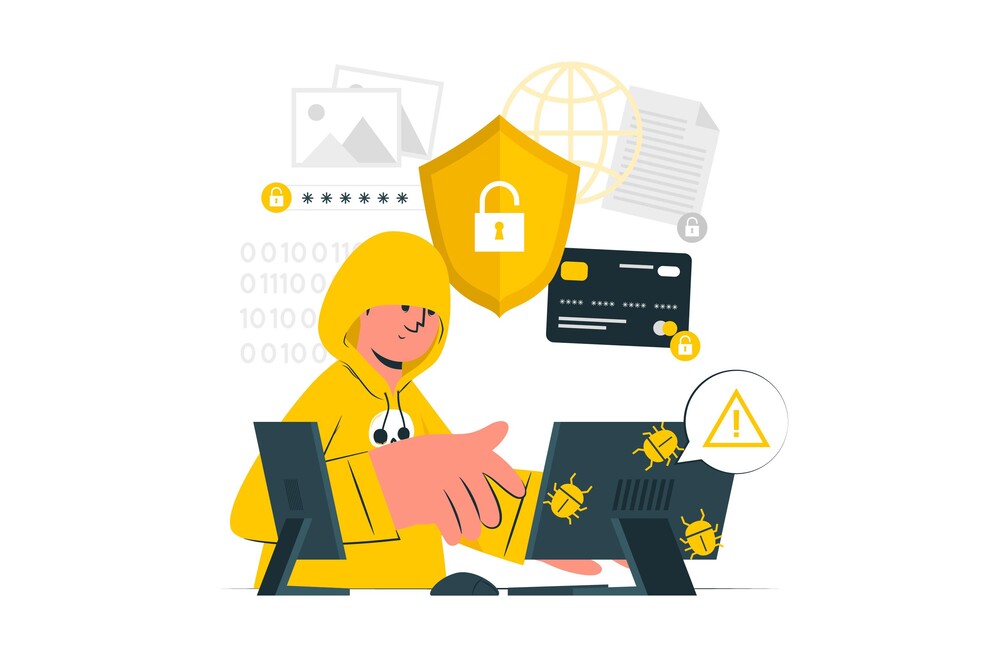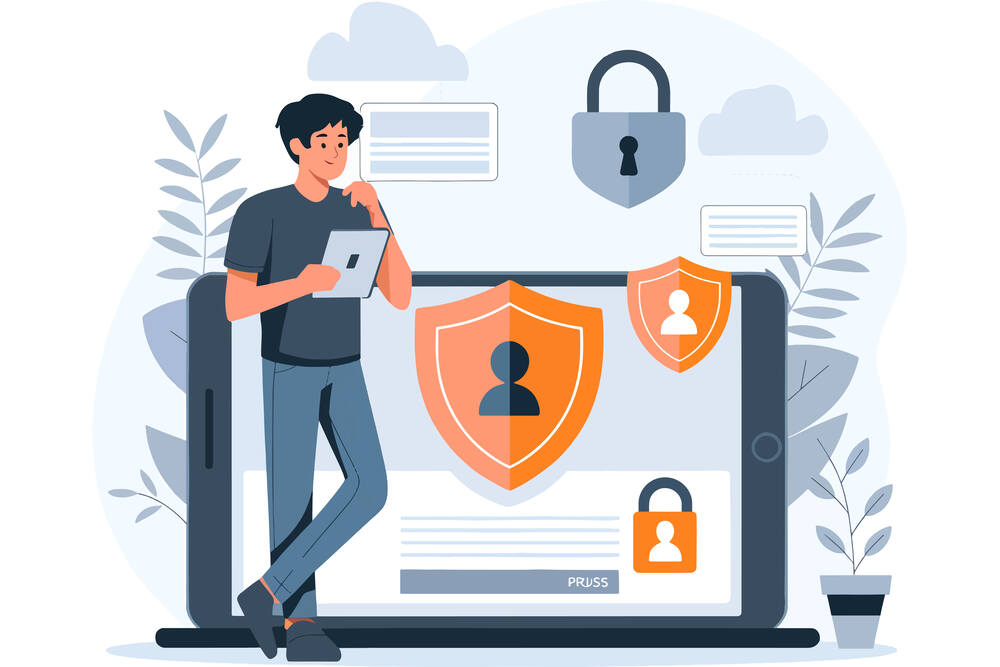
Protect your network with advanced cybersecurity solutions designed for threat detection, risk management, and data protection. These cutting-edge tools and strategies help identify and respond to potential threats, manage security risks, and ensure your data remains secure.
Protecting your personal and business information is more important than ever. Cybersecurity solutions combine various technologies and strategies to defend computers, networks, and data from cyber threats. With the rise in cyberattacks, especially targeting small businesses, implementing strong security measures is no longer optional—it’s essential.
Recent research shows that 43% of cyberattacks are aimed at small businesses, underscoring the urgent need for solid cybersecurity. Strong data protection not only blocks unauthorized access but also helps monitor and secure internal systems, offering a proactive defense against potential breaches.
Understanding Cybersecurity: The Basics
Cybersecurity is all about keeping our systems and networks safe from online threats. Its main goal is to protect sensitive information from being accessed or damaged by unauthorized individuals. As technology continues to evolve, it’s becoming more important than ever to understand cybersecurity so we can safeguard our digital world.
What is Cybersecurity?
Cybersecurity focuses on protecting computers, networks, and data from online threats. It involves using technology and processes to guard against cyberattacks. Cybersecurity is essential for anyone who uses electronic devices or the internet.
The Importance of Cybersecurity
In recent times, Cybersecurity has become more crucial than ever. As organizations expand their online presence, they face a growing number of cyber threats. The average cost of a data breach is around $3.86 million, highlighting the importance of robust cybersecurity measures.
With the rise of remote work, the risk of cyberattacks has increased, making it essential for both individuals and businesses to take cybersecurity seriously. Safeguarding data is no longer optional—it’s a necessity for everyone.
Common Types of Cyber Threats
Cybersecurity tackles many challenges from growing cyber threats. Several key threats seriously affect both people and businesses.
Malware and Ransomware
Malware is malicious software that harms systems. It includes viruses, worms, and spyware. Ransomware locks files and asks for money to unlock them. Ransomware attacks can cause huge money loss and stop business operations. Knowing about these dangers helps us protect ourselves.
Phishing Attacks and Social Engineering
Phishing tricks people into giving away private info through fake emails or websites. Social engineering uses tricks to get personal details. It makes phishing even more effective. Learning about these can help stop them.
Advanced Persistent Threats (APTs)
APTs are complex attacks aimed at certain groups. They secretly get into networks and steal data over time. Because they’re hard to notice, APTs are especially risky. This highlights the importance of good cybersecurity.
| Type of Threat | Characteristics | Impact |
| Malware | Includes viruses, trojans, spyware | System disruption, data loss |
| Ransomware | Encrypts files demand ransom | Financial loss, operational downtime |
| Phishing Attacks | Deceptive emails, fake websites | Identity theft, data breaches |
| Social Engineering | Manipulates individuals for information | Loss of confidential data |
| Advanced Persistent Threats (APTs) | Targeted, stealthy attacks | Long-term data theft, reputational damage |
Essential Cybersecurity Solutions
Safeguarding digital assets is key. Organizations need a mix of tools and strategies for a strong defense. Firewalls, antivirus programs, and data encryption are crucial.
Firewalls: Your First Line of Defense
Firewalls are vital for network security. They check and manage network traffic based on security rules. This creates a barrier, lowering the chance of attacks and unauthorized access.
Antivirus Software: Keeping Your Systems Clean
Antivirus software keeps computer systems safe. It finds and stops malware, like viruses and ransomware. With regular updates and scans, it protects systems from new threats.
Encryption: Securing Your Data
Encryption makes sensitive data unreadable to outsiders. It’s crucial for sending or storing data. Strong encryption stops cybercriminals from getting important data.
Network Security Best Practices
Organizations need to establish strong network security to safeguard information. Creating secure Wi-Fi networks, using VPNs, and doing network audits are key. These steps make sure your security is top-notch.
Implementing Secure Wi-Fi Networks
To keep Wi-Fi safe, there are several steps to follow. Use strong passwords and the newest encryption, like WPA3. Also, avoid sharing your network name and set up a guest network. This makes your Wi-Fi safe from hackers.
VPNs for Enhanced Privacy
VPNs are crucial for online safety. They secure your data on any network, especially public Wi-Fi. By encrypting your connection, VPNs keep your information private. This matters a lot in places with risky Wi-Fi.
Regular Network Audits and Monitoring
Regular audits find weak spots before hackers do. Watching over your network shows you who uses it and how. This way, you can spot threats early. By doing this, your network stays safe and sound.
| Practice | Description | Benefits |
| Secure Wi-Fi | Use strong passwords and WPA3 encryption to protect Wi-Fi networks. | Reduces unauthorized access and enhances data protection. |
| VPN | Employ VPNs for a secure connection when using public Wi-Fi. | Safeguards data from eavesdropping and ensures privacy. |
| Network Audits | Regularly assess network configurations and traffic patterns. | Identifies vulnerabilities and supports proactive threat management. |
Data Protection Strategies
Data protection strategies are crucial today. They keep sensitive information safe from threats and unwanted entry. These strategies cover things like data backup and who can access data, helping to stop data breaches.
Data Backup Solutions
For any organization, having strong data backup solutions is key. This ensures information remains intact and accessible. Let’s look at some common methods:
- Cloud Backups: Cloud services offer off-site data saving. This helps with data recovery in case of technical issues or cyberattacks.
- On-Site Storage: Keeping physical data backups on secure servers allows for fast data recovery when needed urgently.
- Regular Backup Schedules: Making backup schedules regular keeps data updated. It reduces data loss during surprises.
Access Controls and User Permissions
To keep information secure, it’s important to control who can access it. This involves setting clear rules for users. Here are some methods:
- Role-Based Access Control (RBAC): Giving access based on a person’s role enhances security. It ensures that only needed individuals can get to certain data.
- Principle of Least Privilege (PoLP): Each user gets only the access needed for their work. This reduces the risk to important data.
- Regular Audits: It’s good to regularly check who can do what. It keeps things in line with security standards and adjusts access when roles change.
Putting these strategies into action boosts an organization’s defense. Good data backup and strict access control are key to protecting valuable data. These steps are important for any organization’s safety plan.
Threat Detection Technologies
Modern cybersecurity efforts often focus on threat detection tech. This tech helps spot and reduce risks. It keeps an eye on network actions and how users behave, quickly dealing with possible security issues. Adding intrusion detection and machine learning-based analytics improves how safe digital stuff is.
Intrusion Detection Systems (IDS)
Intrusion detection systems are key for cybersecurity. They watch over network traffic for anything odd, alerting the team to possible threats. This allows for fast action against dangers. Good IDS setups give early heads-up and insights into harmful efforts, lowering attack damage.
Behavioral Analytics and Machine Learning
Behavioral analytics studies how users act to spot anything unusual. Machine learning helps see patterns that may be bad signs. This smart look into behaviors not only finds threats faster but tells apart normal from weird actions. Using both machine learning and analytics boosts defenses against new threats.
| Technology | Function | Benefits |
| Intrusion Detection Systems | Monitoring network traffic for suspicious activities | Real-time alerts, early threat identification |
| Behavioral Analytics | Analyzing user behavior to detect anomalies | Enhanced detection of subtle threats, adaptation to behavioral changes |
| Machine Learning | Improving detection accuracy through algorithm training | Efficient analysis of large data sets reduced false positives |
Risk Management in Cybersecurity
Effective risk management in cybersecurity protects digital assets. It requires starting a process to find vulnerabilities. This includes checking for software that needs updating, setting mistakes, and any lack of user knowledge.

Identifying Vulnerabilities
Finding vulnerabilities is critical for strong cybersecurity. Techniques like penetration testing and scans help find weak spots. By identifying these issues early, efforts to fix them can be more focused. Important areas to check are:
- Outdated software and systems
- Weak passwords and access controls
- Network configurations
- Insufficient employee training on security protocols
Assessing Risk and Impact
After spotting vulnerabilities, assessing the risks is next. This means figuring out how likely a cyber attack is and its business impact. A full risk assessment includes:
- Estimating the chance of each vulnerability being used against you
- Looking at what data breaches or outages could do
- Prioritizing risks to handle the worst ones first
This assessment lets organizations use their resources wisely to improve cybersecurity. Combining management, identification, and assessment of risks protects digital security well.
| Vulnerability Type | Likelihood of Exploitation | Potential Impact | Mitigation Strategy |
| Outdated Software | High | Severe Data Breach | Regular Updates and Patching |
| Weak Passwords | Medium | Moderate Financial Loss | Implement Password Policies |
| Misconfigured Firewalls | High | Service Disruption | Perform Configuration Audits |
Compliance in Cybersecurity
Cybersecurity compliance is key to protecting important info. It means following rules that keep data safe.
Knowing about laws like the GDPR and HIPAA helps companies secure their information. These rules guide businesses in setting up strong security practices.
Understanding Regulations and Standards
Regulations are critical in the cybersecurity world. They help companies keep data safe. For instance, the GDPR protects personal info in the EU and affects businesses worldwide.
HIPAA sets the bar high for health information safety in the U.S. To comply, businesses must have good data security and privacy policies.

Creating a Compliance Framework
Building a solid compliance framework is important. It should include plans for dealing with incidents and handling data properly.
A good framework helps businesses follow rules and be ready for security issues. Key parts of a strong framework might be:
- Risk assessment and management protocols
- Regular employee training and awareness programs
- Monitoring and auditing systems to ensure ongoing compliance
- Documentation of procedures and incidents
Using these strategies, companies can improve their cybersecurity stance. This not only protects them but also builds their reputation. A detailed compliance framework is crucial for dealing with current and future security threats.
Conclusion
Safeguarding your digital space is more important than ever. This involves using advanced security tools to defend against hackers and cyber threats. Basic cybersecurity knowledge is essential for everyone, not just IT departments. It’s a key part of protecting both business and personal information.
Strong network security is crucial, including secure Wi-Fi and the use of Virtual Private Networks (VPNs). Regular data backups and limiting access to sensitive information are also vital steps in keeping your data safe.
To reduce risks, businesses must follow regulations and regularly check for vulnerabilities. Creating a secure digital environment helps navigate the complex landscape of cyber threats. By taking these proactive steps, individuals and businesses can better protect their online world.
Ready to innovate and transform your business? Say hello to CodeBeavers!
If you are looking for ways to bring your product or app ideas to life? We’ve got your back. CodeBeavers has the tools and engineers you need to make your projects come alive. With CodeBeavers, you’ll be able to build faster than ever, deploy code with ease, and scale like never before. Send us your requirements now, and let’s start winning together.



